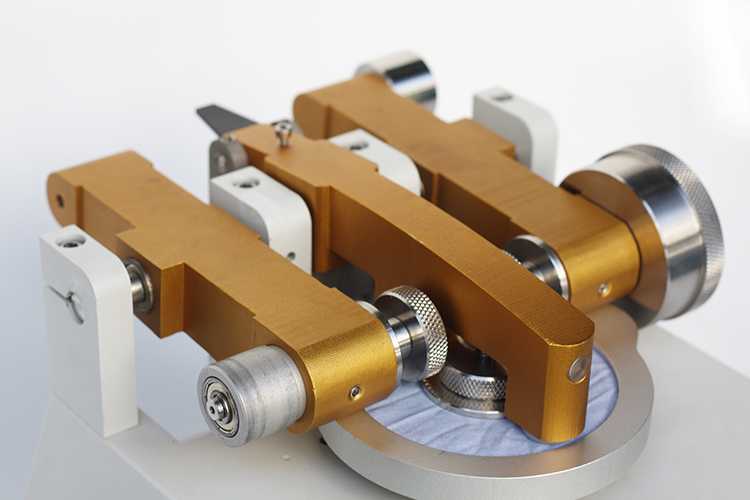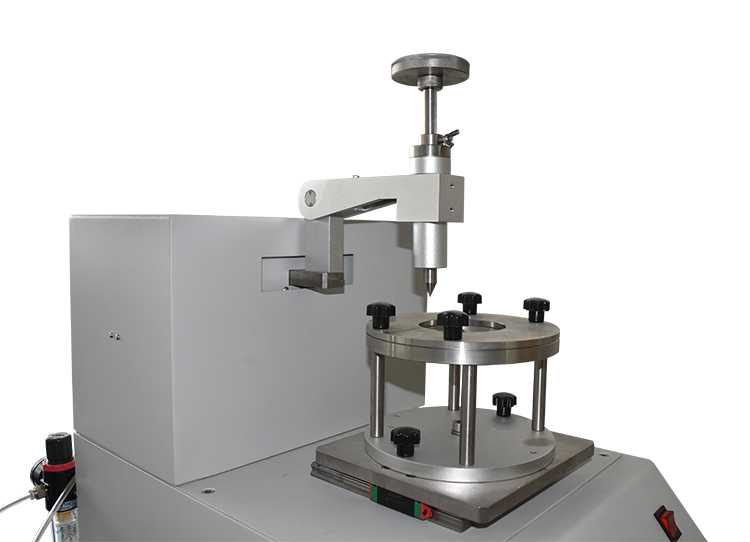The desired ARC properties are high transparency and optical clarity, weatherability, abrasion resistance,strong adhesion to the base mirror film substrate, compatibility with high volume roll-to-roll production, and low material and manufacturing costs. A number of candidate ARC products such as UV-cured thermoset acrylates, polyurethanes, and vacuum deposited inorganic oxide hardcoats were identified as candidate formulations. Industrial collaborators prepared samples having their ARCs deposited onto ReflecTech Mirror Film pre-laminated to aluminum sheet substrates (~10 cm x 10 cm size). ARC coated samples were provided and were evaluated for baseline (unweathered) abrasion resistance and adhesion to the polymer film reflector material. Additional samples were also subjected to a variety of accelerated exposure conditions and subsequently tested for abrasion resistance and adhesion. Once the optimal ARC formulation was ascertained, additional laboratory batch samples were prepared, roll-to-roll pilot and production scale materials were produced and further weathering tests were conducted.
Experimental:
A comprehensive test plan was devised to evaluate and demonstrate the abrasion protective properties of candidate hardcoats both as initially formulated/applied and as a function of expected in-service environmental conditions. Appropriate aspects of the plan included measurement of properties directly of interest (e.g. specular reflectance at several acceptance angles), use of applicable/relevant substrates (ReflecTech Mirror Film laminated to standard mill-finish aluminum), and exposure of candidate samples to the types of conditions expected in service both in terms of weathering and contact cleaning.
Screening Tests:
In addition to demonstrating that the initial optical properties of the hard-coated ReflecTech Mirror Film are satisfied, it was important to confirm that abrasion resistance of unweathered materials is maintained after representative weathering has been experienced. For screening purposes, accelerated test exposures included UV light, condensation cycling, and thermal cycling. Candidate samples were subjected to UV exposure in an Atlas Ci5000 WeatherOmeter? as per ASTM G155 [1]. A xenon arc lamp source was filtered to provide a light intensity of about 2X the terrestrial solar spectrum. Temperature and relative conditions were held constant at 60?C and 60% respectively. A Q-Lab QUV chamber was used to expose samples to cyclic condensation according to ASTM D4587 [2]. A UVA-340 light source was used having a 290-340 nm UV light spectrum. Samples were cycled between dry exposure at 60°C with the light source on for 4 hours and 100% relative humidity (condensation) at 30?C in the dark for 4 hours. ASTM D6944 (Method B) was used to perform thermal cycling tests of candidate samples [3]. Each cycle held the samples at -5°C for 16 hours and then 50±3°C for 8 hours; 30 cycles were completed.
A modified version of ASTM Standard D4060 was used to quantify abrasion resistance [4]. Abrasive stress was applied using a Taber abraser unit and a Devices and Services Specular Reflectometer was used to optically assess abrasive damage to the candidate ARCs and thereby monitor the performance parameter of direct interest namely, specular reflectance, as a function of the number of cycles. Taber abrasion is a severe stress compared to normal cleaning measures used in solar fields but it does allow a standardized protocol to obtain meaningful intercomparisons of candidate materials samples. In terms of available standardized test procedures, the Taber abraser test is reported to have the highest correlation with the appearance of hardcoated films in actual use [5]. A minimum 250 g arm weight was used. Specular reflectance was measured at 660 nm, ρs(θ,λ=660), at θ = 7.5 and 12.5 mrad (0.43°, and 0.72°) half acceptance angles. Specular reflectance was measured at four spots on each 10 cm x 10 cm sized sample before abrasion, after 10 cycles, and after 30 cycles.
In addition to maintaining abrasion resistance, it is important that the ARC retain good adhesion to the ReflecTech Mirror Film underlayer before, during, and after weathering. Coating adhesion was measured using the ASTM D3359 cross-hatch tape peel test [6].
 Additional Accelerated Weathering Tests:
Additional Accelerated Weathering Tests:
Beyond the requisite baseline abrasion resistance and adhesion properties demonstrated in screening tests, intrinsic UV weatherability is an essential requirement of organic-based materials (such as polymer mirror films and UV-cured acrylate coatings) that are expected to exhibit extended lifetimes under outdoor service conditions. The performance and durability properties of the standard ReflecTech Mirror Film product have been previously documented [7]. The most promising candidate ARC samples that passed the screening tests were subsequently subjected to further accelerated weathering tests to determine their resistance to UV exposure. Two accelerated UV exposure chambers were used. The first was an artificial solar simulator light source that uses a 1.4 kW xenon arc lamp to provide a ~2X terrestrial solar spectrum in the 300-500 nm bandwidth [1]. Four sets of identical samples are concurrently exposed under constant irradiance in each of four chamber quadrants that experience four combinations of temperature and relative humidity. This allows the effects of these stresses to be determined in parallel with resistance to UV. Samples were also exposed at NREL’s ultra-accelerated weathering system (UAWS) [8]. The UAWS uses special optical facets to reflect primarily the UV wavelengths of terrestrial natural sunlight to avoid overheating the samples during exposure. The UAWS facets use interference coatings deposited onto glass. These consist of multiple alternating layers of materials with high and low refractive indexes to selectively reflect the UV. The near infrared and visible wavelengths are attenuated to reduce the thermal loading of the material under test, since otherwise the intense heat would render the testing invalid. ARC coated ReflecTech Mirror Film samples were exposed at 100X concentration of natural UV sunlight for an equivalent of over 10 years outdoor exposure at 30° and 60° C. To supplement Taber abrasion testing, another ASTM test (D2486) was also performed [9]. This test uses linearly articulated scrub brushes that are cycled in a back-and-forth motion 37 times per minute across the surface of ARC coated ReflecTech Mirror Film samples. A Byk Model PB5005 wet abrasion scrub tester was used to perform this test. Although designed to quantify the abrasion resistance of paint products, the test can simulate the most aggressive of solar mirror field cleaning processes. As a further test of coating adhesion, samples of ARC coated ReflecTech Mirror Film laminated to aluminum sheet (36 cm x 76 cm) were immersed in deionized water for extended timeframes. The coating was inspected for visual delamination and the cross hatch test [6] was used to further quantify durability.
Conclusions:
An advanced ARC product applied to ReflecTech Mirror Film has demonstrated excellent abrasion resistance, adhesion, and weatherability. A UV curable acrylate formulation from Red Spot Paint & Varnish Company, Inc. withstands Taber and scrub brush abrasion to the extent that visual affects are nearly imperceptible and measured specular reflectance is virtually unchanged. Resistance to Taber abrasion is maintained after exposure to UV light, condensation cycling, and thermal cycling. The hardcoat has demonstrated outstanding weatherability that includes highly accelerated exposure to over 10 years equivalent outdoor UV. This material has been successfully scaled up from batch laboratory samples through pilot conditions to being manufactured as a 1.5 m wide roll-to-roll construction in a production environment.
